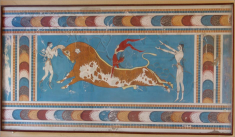Speaker
Description
After 9 years of successful operation in proton-proton collisions at $\sqrt{s}$ = 13 TeV, the ATLAS detector started in 2018 the preparations for an ambitious physics project, aiming the exploration of very rare processes and extreme phase spaces, an endeavor that will require a substantial increase in the amount of data to be taken. To accomplish this purpose, a comprehensive upgrade of the detector and associated systems was devised and planned to be carried out in two phases. The Phase-I upgrade program foresees new features for the muon detector, for the electromagnetic calorimeter trigger system and for all trigger and data acquisition chain. These upgrades are reaching the final commissioning stage and will enable ATLAS to carry on its physics program at a two fold increased luminosity. Upon reaching an integrated luminosity of 350 fb $^{-1}$, the LHC will undergo a new upgrade, becoming the High-Luminosity LHC (Hl_LHC). The HL-LHC will reach an instantaneous ultimate luminosity of 7.5x10$^{34}$ cm$^{-1}$ of integrated luminosity in about 10 years of operation. The challenges the ATLAS experiment will face during the HL-LHC stage are paramount, as it will have to cope with more than 200 simultaneous collisions per bunch crossing with many subsystems exposed to very high radiation levels. To preserve its performance, the ATLAS detector will require a major upgrade program, known as Phase-II upgrade program. During the Phase-II upgrade, a completely new all-silicon tracker with extended rapidity coverage will replace the current inner tracker detector; the calorimeters and muon systems will have their trigger and data acquisition systems fully redesigned, allowing the implementation of a free-running readout system. Finally, a new subsystem called High Granularity Timing Detector will aid the track-vertex association in the forward region by incorporating timing information to the reconstructed tracks. This presentation will summarize the expected performance of the aforementioned projects as well as its impact on the physics program over the next years.
Details
Geoffrey Mullier
geoffrey.andre.mullier@cern.ch
Sweden
This abstract is being submitted on behalf of ATLAS collaboration by the ATLAS Upgrade Speakers Committee. If accepted, a final speaker will be selected and the organization informed.
| Is this abstract from experiment? | Yes |
|---|---|
| Name of experiment and experimental site | ATLAS Experiment (atlas.ch) |
| Is the speaker for that presentation defined? | Yes |
| Internet talk | Maybe |
